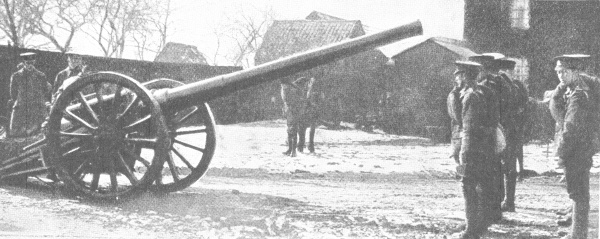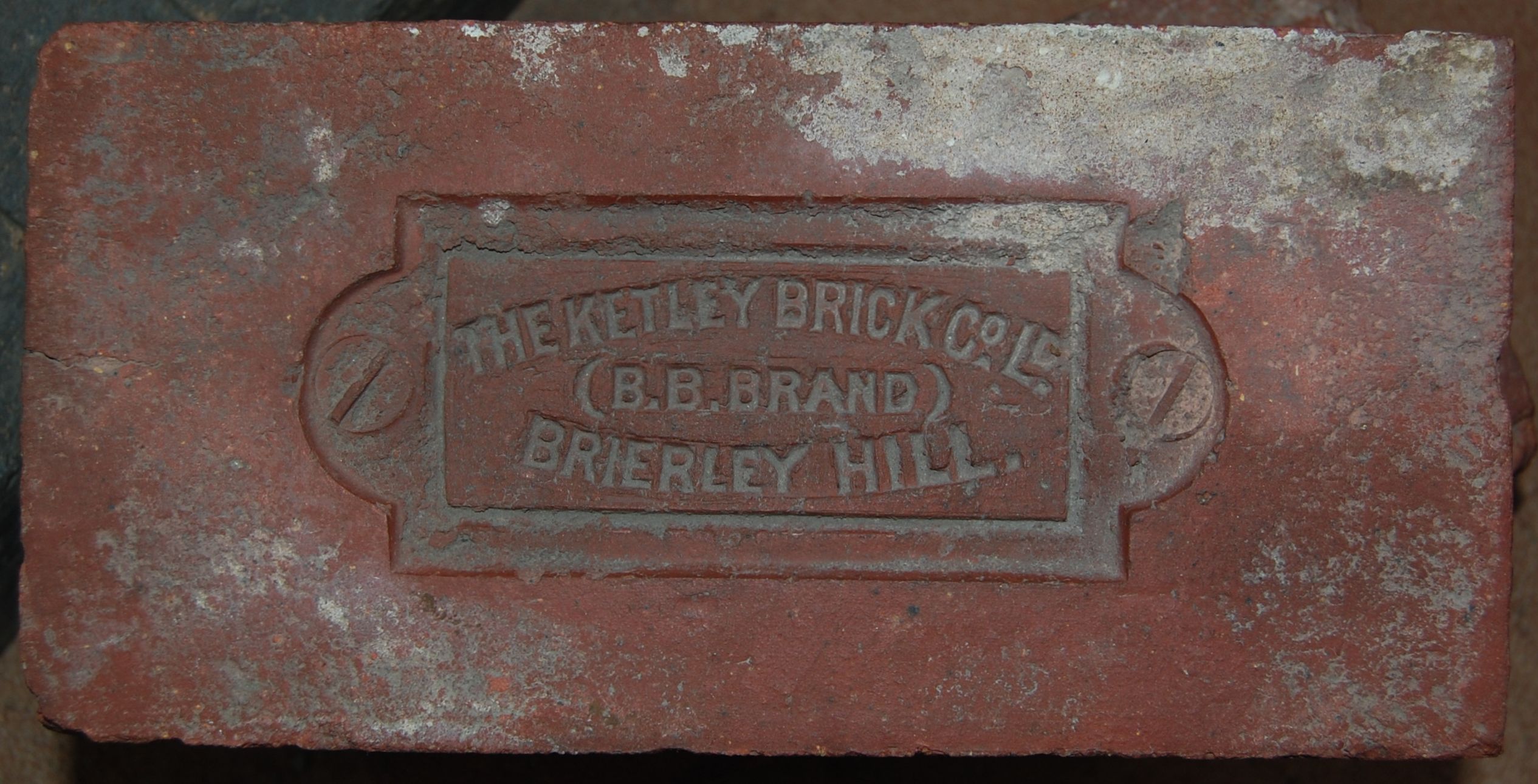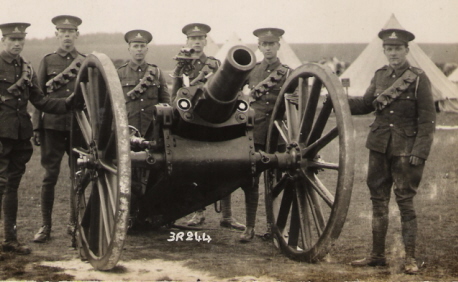|
73rd Heavy Anti-Aircraft Regiment, Royal Artillery
73rd Heavy Anti-Aircraft Regiment, Royal Artillery was a West Midlands-based volunteer air defence unit of Britain's Territorial Army (TA) raised in 1937. During World War II, it served in the Battle of France, The Blitz, Egypt, Sicily and Italy. Postwar, its successor regiments continued to serve until 1967, and a battery descended from the regiment forms part of today's Army Reserve Origins In the late 1930s, the need for improved anti-aircraft (AA) defences for Britain's cities became apparent, and a programme of converting existing TA units was pushed forward. 73rd Anti-Aircraft Brigade Royal Artillery was formed at Wolverhampton on 1 October 1937. The Regimental Headquarters (RHQ) was formed from that of the former 54th (Durham and West Riding) Medium Brigade at York, which was being broken up; 204 (Warwickshire) Battery was transferred from 51st (Midland) Medium Brigade, and two Staffordshire batteries came from 62nd (North Midland) Field Regiment, giving the following ... [...More Info...] [...Related Items...] OR: [Wikipedia] [Google] [Baidu] |
Anti-Aircraft Command
Anti-Aircraft Command (AA Command, or "Ack-Ack Command") was a British Army command of the Second World War that controlled the Territorial Army anti-aircraft artillery and searchlight formations and units defending the United Kingdom. Origin The formation of a Command-level body of anti-aircraft defences had been announced in 1938, but Anti-Aircraft Command was not formed until 1 April 1939 under General Sir Alan Brooke, who had been commander of Anti-Aircraft Corps. He then passed control to Sir Frederick Pile, who would remain in command until the end of the war.Routledge, Chapter 26. AA Command was under the operational direction of RAF Fighter Command as part of Air Defence of Great Britain, and occupied a headquarters known as ''Glenthorn'' in the grounds of Bentley Priory, home of Fighter Command. The majority of AA Command's guns and searchlights were operated by Territorial Army units. Some Regular Army units joined after they returned from the Dunkirk evacuation. L ... [...More Info...] [...Related Items...] OR: [Wikipedia] [Google] [Baidu] |
West Riding Heavy Battery, Royal Garrison Artillery
The West Riding Heavy Battery, Royal Garrison Artillery was a part-time unit of Britain's Territorial Force formed in 1908 in the West Riding of Yorkshire. It fought on the Western Front during World War I, and served on in the Territorial Army until the eve of World War II. Origin ::''See main article 1st East Riding Artillery Volunteers'' When the Territorial Force (TF) was created in 1908 by the Haldane Reforms, each infantry division was allocated a heavy battery of the Royal Garrison Artillery (RGA). The West Riding Division was provided with the West Riding battery, based at York. This unit had originally been formed on 9 February 1861 as the 3rd Yorkshire (West Riding) Artillery Volunteer Corps but for almost 50 years it had been brigaded as part of the 1st East Riding Artillery Volunteers, later the 1st East Riding RGA (Volunteers).Litchfield & Westlake, pp. 176–86.''Army List'', various dates. In 1908–10, while the East and North Riding batteries of the 1st East ... [...More Info...] [...Related Items...] OR: [Wikipedia] [Google] [Baidu] |
Military Cross
The Military Cross (MC) is the third-level (second-level pre-1993) military decoration awarded to officers and (since 1993) other ranks of the British Armed Forces, and formerly awarded to officers of other Commonwealth countries. The MC is granted in recognition of "an act or acts of exemplary gallantry during active operations against the enemy on land" to all members of the British Armed Forces of any rank. In 1979, the Queen approved a proposal that a number of awards, including the Military Cross, could be recommended posthumously. History The award was created on 28 December 1914 for commissioned officers of the substantive rank of captain or below and for warrant officers. The first 98 awards were gazetted on 1 January 1915, to 71 officers, and 27 warrant officers. Although posthumous recommendations for the Military Cross were unavailable until 1979, the first awards included seven posthumous awards, with the word 'deceased' after the name of the recipient, from rec ... [...More Info...] [...Related Items...] OR: [Wikipedia] [Google] [Baidu] |
Lieutenant Colonel (United Kingdom)
Lieutenant colonel (Lt Col), is a rank in the British Army and Royal Marines which is also used in many Commonwealth of Nations, Commonwealth countries. The rank is superior to Major (United Kingdom), major, and subordinate to Colonel (United Kingdom), colonel. The comparable Royal Navy rank is Commander (Royal Navy), commander, and the comparable rank in the Royal Air Force and many Commonwealth of Nations, Commonwealth air forces is Wing commander (rank), wing commander. The rank insignia in the British Army and Royal Marines, as well as many Commonwealth countries, is a crown above a Order of the Bath, four-pointed "Bath" star, also colloquially referred to as a British Army officer rank insignia, "pip". The crown has varied in the past with different monarchs; the current one being the St Edward's Crown, Crown of St Edward. Most other Commonwealth countries use the same insignia, or with the state emblem replacing the crown. In the modern British Armed forces, the establishe ... [...More Info...] [...Related Items...] OR: [Wikipedia] [Google] [Baidu] |
Munich Crisis
The Munich Agreement ( cs, Mnichovská dohoda; sk, Mníchovská dohoda; german: Münchner Abkommen) was an agreement concluded at Munich on 30 September 1938, by Germany, the United Kingdom, France, and Italy. It provided "cession to Germany of the Sudeten German territory" of Czechoslovakia, despite the existence of a 1924 alliance agreement and 1925 military pact between France and the Czechoslovak Republic, for which it is also known as the Munich Betrayal (; ). Most of Europe celebrated the Munich agreement, which was presented as a way to prevent a major war on the continent. The four powers agreed to the German annexation of the Czechoslovak borderland areas named the Sudetenland, where more than three million people, mainly ethnic Germans, lived. Adolf Hitler announced that it was his last territorial claim in Northern Europe. Germany had started a low-intensity undeclared war on Czechoslovakia on 17 September 1938. In reaction, the United Kingdom and France on 20 Sep ... [...More Info...] [...Related Items...] OR: [Wikipedia] [Google] [Baidu] |
Brierley Hill
Brierley Hill is a town and electoral ward in the Metropolitan Borough of Dudley, West Midlands, England, 2.5 miles south of Dudley and 2 miles north of Stourbridge. Part of the Black Country and in a heavily industrialised area, it has a population of 13,935 at the 2011 census. It is best known for glass and steel manufacturing, although industry has declined considerably since the 1970s. One of the largest factories in the area was the Round Oak Steelworks, which closed down and was redeveloped in the 1980s to become the Merry Hill Shopping Centre. Brierley Hill was originally in Staffordshire. Since 2008, Brierley Hill has been designated as the Strategic Town Centre of the Dudley Borough. History The name Brierley Hill derives from the Old English words 'brer', meaning the place where the Briar Rose grew; 'leah', meaning a woodland clearing; and 'hill'. Largely a product of the Industrial Revolution, Brierley Hill has a relatively recent history, with the first written ... [...More Info...] [...Related Items...] OR: [Wikipedia] [Google] [Baidu] |
95th (Birmingham) Heavy Anti-Aircraft Regiment, Royal Artillery
95 or 95th may refer to: * 95 (number) * one of the years 95 BC, AD 95, 1995, 2095, etc. * 95th Division (other) * 95th Regiment (other), 95th Regiment ** 95th Regiment of Foot (other) * 95th Squadron (other) * Atomic number 95: americium *Microsoft Office 95 * Saab 95 * Windows 95 See also * 9 to 5 (other) * * List of highways numbered {{Numberdis ... [...More Info...] [...Related Items...] OR: [Wikipedia] [Google] [Baidu] |
Cadre (military)
A cadre (, , ) is the complement of commissioned officers and non-commissioned officers of a military unit responsible for training the rest of the unit. The cadre may be the permanent skeleton establishment of a unit, around which the full unit can be built if needed. In countries which have conscription, a cadre may comprise the permanent staff of a regiment who train the conscripts assigned to it. The term comes from the French expression ''en cadre'', with the same meaning. In the Military of the United States, a cadre is a group or member of a group of leaders, especially in units that conduct formal training schools. In United States Army jargon, the word is singular and plural. At the United States Military Academy, the upper-class cadets who conduct Cadet Basic Training for incoming freshmen are called the cadre. In the British Armed Forces, a cadre is a group of instructors or a unit that trains potential instructors or non-commissioned officers (NCOs), in which case i ... [...More Info...] [...Related Items...] OR: [Wikipedia] [Google] [Baidu] |
Birmingham
Birmingham ( ) is a city and metropolitan borough in the metropolitan county of West Midlands in England. It is the second-largest city in the United Kingdom with a population of 1.145 million in the city proper, 2.92 million in the West Midlands metropolitan county, and approximately 4.3 million in the wider metropolitan area. It is the largest UK metropolitan area outside of London. Birmingham is known as the second city of the United Kingdom. Located in the West Midlands region of England, approximately from London, Birmingham is considered to be the social, cultural, financial and commercial centre of the Midlands. Distinctively, Birmingham only has small rivers flowing through it, mainly the River Tame and its tributaries River Rea and River Cole – one of the closest main rivers is the Severn, approximately west of the city centre. Historically a market town in Warwickshire in the medieval period, Birmingham grew during the 18th century during the Midla ... [...More Info...] [...Related Items...] OR: [Wikipedia] [Google] [Baidu] |
Saltley
Saltley is an inner-city area of Birmingham, east of the city centre. The area is part of the Washwood Heath ward, and was previously part of the Nechells ward. It is part of the Ladywood constituency in the city. History Saltley was originally an unverified parish within the estate of the Adderley family and their descendants, who had built their original residence Saltley Hall on the site of what is now Adderley Park. As water became a key resource, the family moved their residence to Hams Hall for better access to the River Tame. When the English Civil War occurred, the Adderleys like most gentry chose to support the Royalist cause, and paid heavy fines afterwards for being on the losing side. In 1845 railway carriage makers Joseph Wright and Sons relocated from London to a factory built on meadowlands in Saltley; the company eventually became Metro-Cammell, who remained in Saltley until 1962. As Birmingham developed as an industrial location, Saltley became an overspill a ... [...More Info...] [...Related Items...] OR: [Wikipedia] [Google] [Baidu] |
West Park, Wolverhampton
Formerly called the People's Park, Wolverhampton's West Park was opened on 6 June 1881. It is Grade II* listed in Historic England's Register of Parks and Gardens. Background The site chosen for the first of the large parks in Wolverhampton was the Race Course, or Broad Meadows, owned by the Harry Powlett, 4th Duke of Cleveland, Duke of Cleveland. On 12 March 1879, Alderman Samuel Dickinson invited landscape gardeners to compete for the layout of the park. The winner of the £50 prize was Richard Hartland Vertegans of Chad Valley, Birmingham, Chad Valley Nurseries, Edgbaston, Birmingham. This was several years before Vertegans designed Handsworth Park, Victoria Park, Handsworth, Birmingham. The remit from the council included: *Ornamental lakes, 8 acres *Areas for volunteer drill, archery, cricket and bowls, 12 acres The park was opened on 6 June 1881 by the Mayor of Wolverhampton, Alderman John Jones (Ironmaster), John Jones. The bandstand was presented by the town's long serv ... [...More Info...] [...Related Items...] OR: [Wikipedia] [Google] [Baidu] |
4th North Midland Brigade, Royal Field Artillery
The 4th North Midland Brigade, sometimes known as the 'Derbyshire Howitzers', was a part-time unit of Britain's Royal Field Artillery created in 1908 as part of the Territorial Force. It served on the Western Front in World War I. Reorganised between the wars, it was later converted to the anti-aircraft (AA) role. During World War II, part of the regiment served in the Siege of Malta but the rest was captured at the Fall of Tobruk. The reconstituted regiment served on in Anti-Aircraft Command until 1955 and as a unit of the Royal Engineers until 1967. Origin When the Territorial Force (TF) was created from the former Volunteer Force by the Haldane Reforms in 1908, it was organised into regional infantry divisions, each with a full establishment of Royal Field Artillery (RFA) brigades. Where there were no suitable artillery volunteer units in the region, these brigades had to be created from scratch. This was the case for the North Midland Division, for which a new Howitzer brigad ... [...More Info...] [...Related Items...] OR: [Wikipedia] [Google] [Baidu] |






